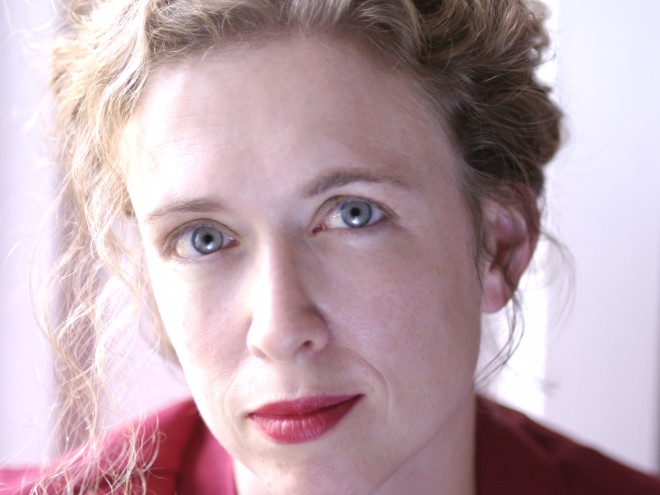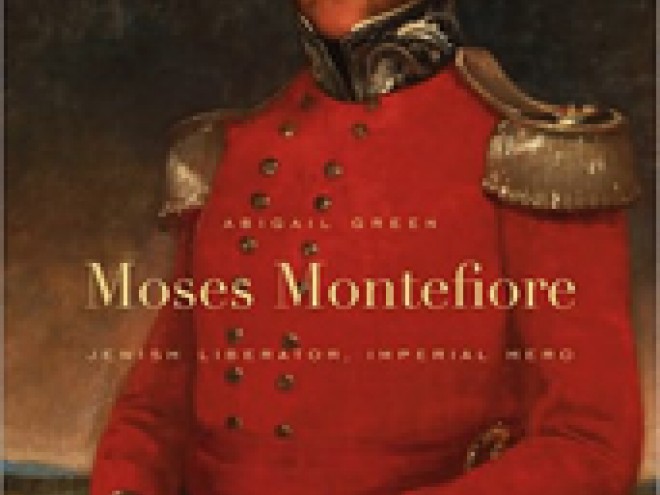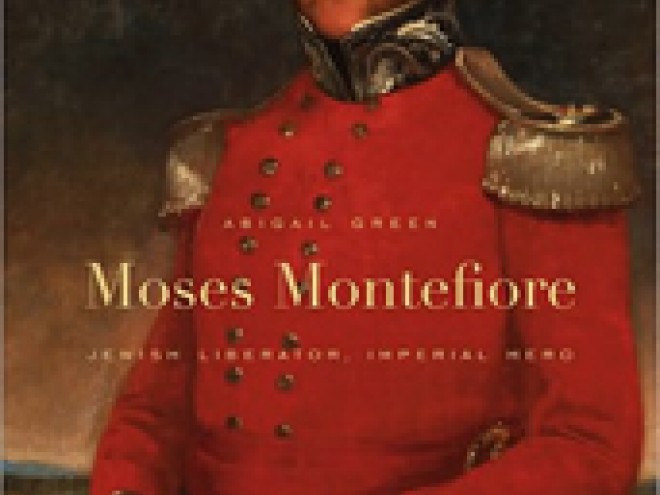Abigail Green’s new biography seeks to reclaim Moses Montefiore’s status as the preëminent Jewish global celebrity of the 19th century. Green, a scholar as well as a distant relation, feels this once most famous Jew in the world has been “astonishingly neglected.” You too may marvel at the breadth and scope of Montefiore’s life after reading her book. In fact, whenever and wherever a Jewish crisis occurred, it seemed Montefiore was on the scene.
This is a scholarly, endlessly detailed, and extensively researched work. Some may find all the information a bit laborious to wade through at times. Montefiore’s remarkable 100 years unfold in 19 in-depth chapters. His early life, business successes, loving and childless marriage, extensive world diplomacy, philanthropy, and visits to Palestine are all chronicled.
The religious, political, economic, and social ideas and realities of the 19th century are the backdrop against which Sir Montefiore served his fellow Jews and humanity. Knighted by Queen Victoria, he proudly had the word Jerusalem engraved on his coat of arms. His actions and deeds served as the inspiration and groundwork for the beginnings of a worldwide Jewish consciousness, Jewish activism, Zionism, and Jewish-Christian- Moslem relationships.
Though always true to his strict religious principles, Montefiore was not without his detractors, power struggles, and hinted-at infidelities. The foibles, characters, and personalities of individuals are never masked throughout the book.
One hundred fifty years after Montefiore established the first Jewish settlement outside Jerusalem’s walls, Green restores Montefiore’s definitive place, pivotal role, and stature as the venerated philanthropist, leader, and diplomat he was in Jewish history. Appendices, archives consulted, illustrations, index, maps, notes.
Looking for Montefiore
by Abigail Green
My mother was born a Montefiore, so this story has always resonated in my life. A portrait of Sir Moses’s mother hung in the hallway of my grandparents’ house alongside the Montefiore family arms. Every Pesach we read an extract from Montefiore’s diary describing his miraculous escape from a watery grave upon throwing a piece of afikomen into stormy seas south of Malta. Once, as a teenager, I attended a massive family lunch to mark his bicentenary in 1984 – 5. We solemnly perused copies of the family tree and trekked out to an obscure museum on the fringes of London, where a small commemorative exhibition was held.
When I began work on Montefiore, I typically encountered two responses. Historians outside the world of Jewish studies hadn’t heard of him and couldn’t understand why an Oxford don would abandon a ‘safe’ career studying German nationalism for the biography of a seemingly obscure Jew. Viewed professionally, the family connection was, if anything, a little embarrassing. Meanwhile, Jewish historians warned me that there were no sources, and nothing new to say.
Coming fresh to the field, I was naïve enough to ignore them. In truth, the project posed huge difficulties: archival materials in eleven countries and nine languages demanded linguistic and paleographic skills I simply didn’t have. But as I worked my way through newspapers, diaries, personal memorabilia, and government documents, visiting corners of a lost Jewish world from Kovno to Mogador, I realized that underpinning Montefiore’s remarkable life-story was a far more important story waiting to be told.
Looking for Montefiore required me to dig a little deeper. It turned out that there were lots of books about Jews in particular places, but nobody had really thought about the parallel experiences of Jews in places like England, Russia, Palestine, and Morocco in a way that reflected the differences but also the connections between them, and the fact that these experiences were happening simultaneously. Because of Montefiore’s humanitarian concerns, international interests, and strong Jewish ties, exploring his life story enabled me to connect the dots of Jewish history in new ways.
In 1871, for instance, a terrible pogrom left 4000 Jewish families destitute in Russian Odessa, just as famine threatened Persian Jewry with starvation and death on an epic scale. These tragedies seemed unconnected, but they weren’t: Jews in London like Montefiore learned about them at the same time. Unable to agree on a way forward, they launched rival fund-raising campaigns that attracted donations from Jews in places as far flung as Lithuania, Germany, and North America, raising millions in today’s money on behalf of the victims. Episodes like this illuminate the birth of an international Jewish public and the globalization of Jewish consciousness for the first time.
Nor was this just a Jewish story. Reading about the famine and humanitarian disasters that galvanized Montefiore, I was repeatedly struck by parallels with our contemporary world. Disaster news is distressingly familiar nowadays, but in Montefiore’s age it was something new and extraordinary. War, starvation, and natural catastrophes are staples of human existence, yet for centuries no one cared beyond those immediately affected, quite simply because nobody knew. Thanks to the telegraph and the newspaper, suddenly they did. And because this was a sentimental age of profound religious and moral convictions there were many, particularly in the West, who refused to look away.
Montefiore’s campaigns on behalf of Jewish refugees and famine victims were part and parcel of this phenomenon — because of their global scale, and because they combined religion with humanitarianism and the exotic East in a way that resonated well beyond the Jewish world. Looking through the lists of those who gave money to Montefiore, I was amazed to find reverends, countesses, and railway workers, bishops and Australian radicals. This was not just the story of the birth of modern world Jewry; it was also the story of how the protection of ethnic and religious minorities came to be seen as a benchmark of Western ‘civilization.’ It was, in short, the story of how Jewish activists, Jewish concerns, and Jewish values shaped the twin traditions of liberalism and human rights that define Western political culture.
Renita Last is a member of the Nassau Region of Hadassah’s Executive Board. She has coordinated the Film Forum Series for the Region and served as Programming and Health Coordinators and as a member of the Advocacy Committee.
She has volunteered as a docent at the Holocaust Memorial and Tolerance Center of Nassau County teaching the all- important lessons of the Holocaust and tolerance. A retired teacher of the Gifted and Talented, she loves participating in book clubs and writing projects.




